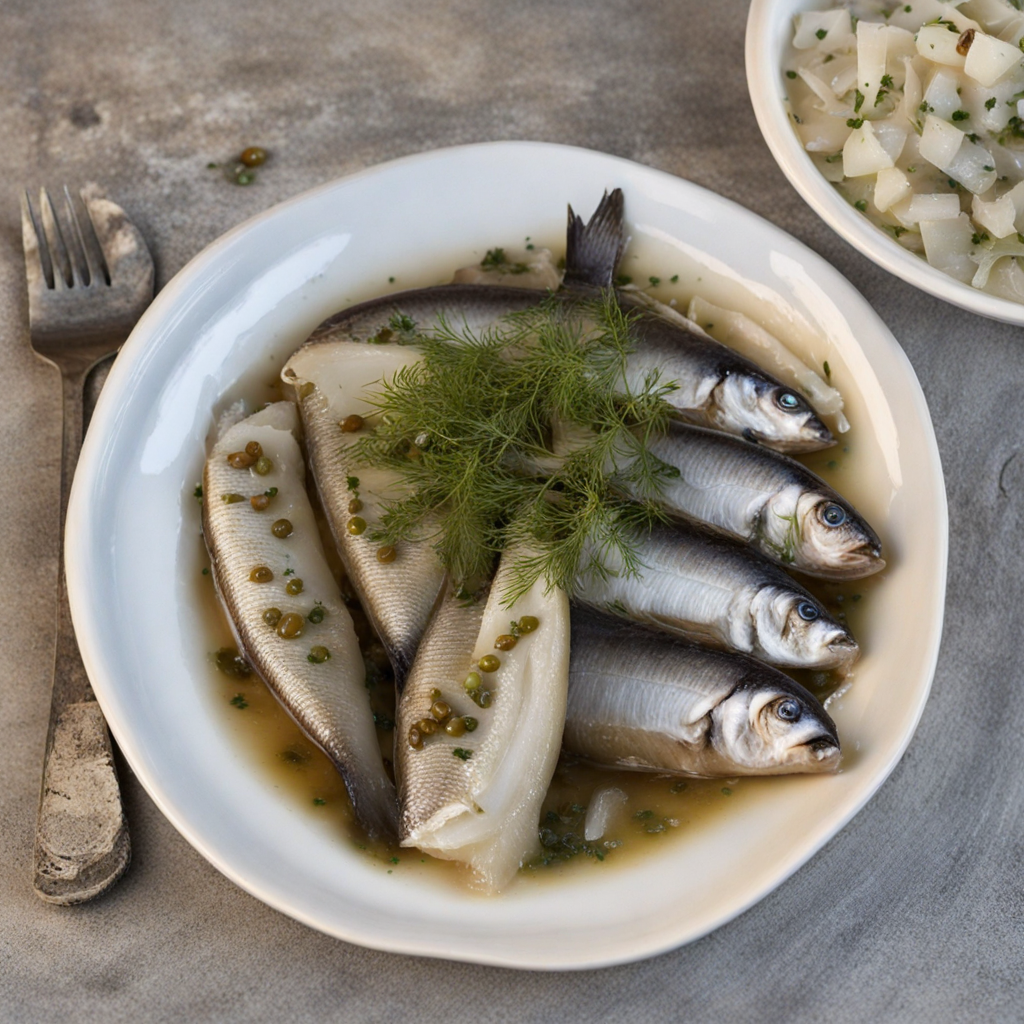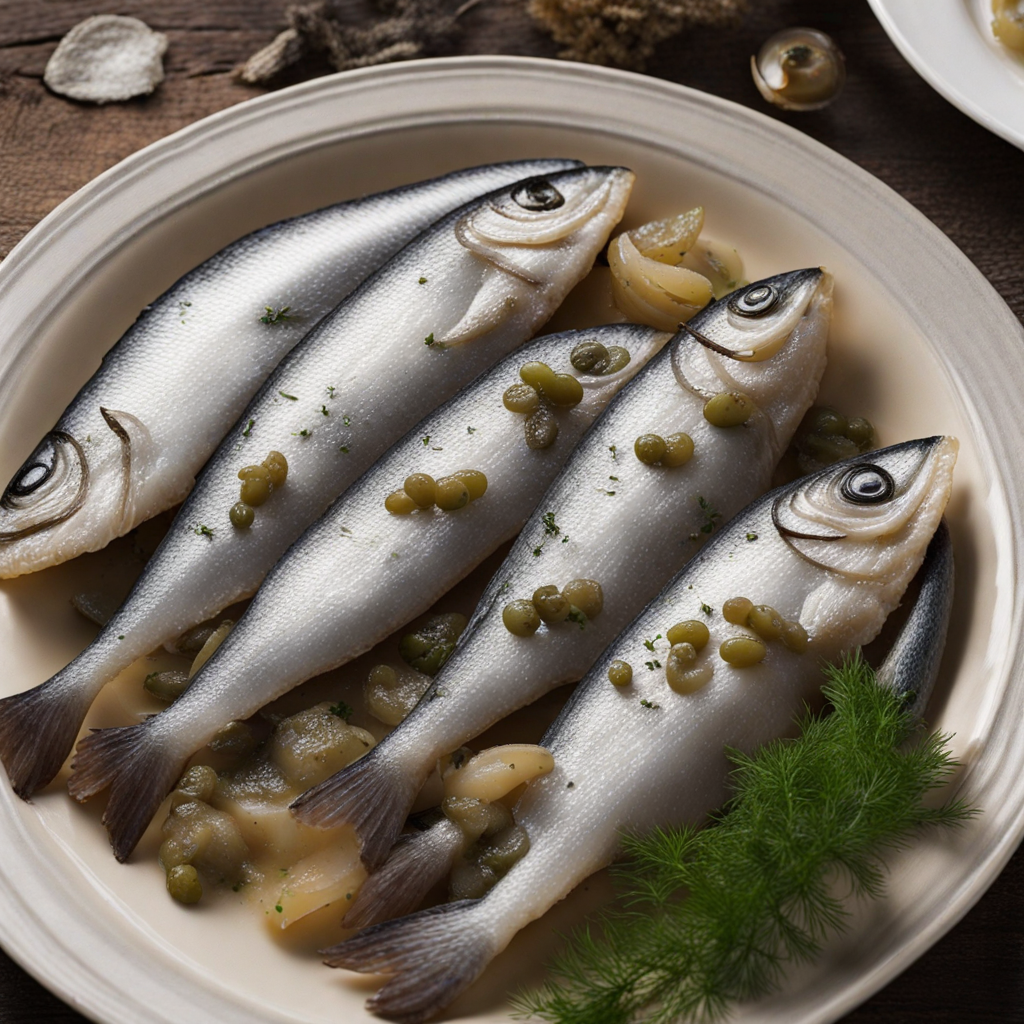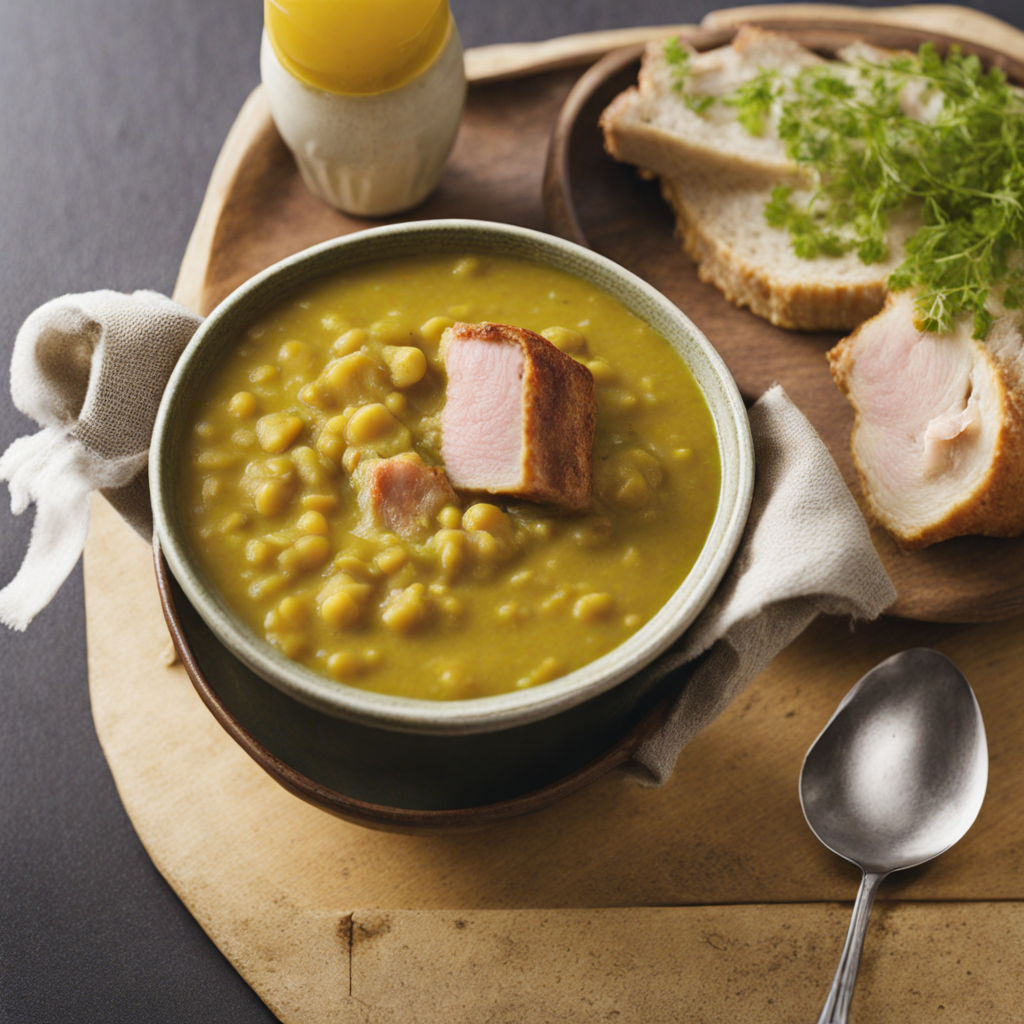Spegesild
Spegesild is a traditional Danish dish that showcases the country's rich culinary heritage, particularly in its love for seafood. This delicacy features herring, which is typically pickled or marinated in a brine solution that often includes vinegar, sugar, and various spices. The herring is then served cold, often on a slice of rye bread, creating a delightful combination of flavors and textures. The balance of sweetness and acidity in the pickling process elevates the fish, making it a refreshing dish that embodies the essence of Nordic cuisine. One of the most appealing aspects of Spegesild is its versatility, as it can be prepared in numerous ways. Variations might include adding onions, mustard, or even beetroot to the mix, giving each version a unique twist. The dish is often garnished with fresh herbs or served alongside pickled vegetables, which enhance its flavor profile and add a vibrant touch to the presentation. This makes Spegesild not just a meal but an experience that invites exploration of different regional interpretations. When enjoying Spegesild, one can appreciate the cultural significance behind this dish, as it has been a staple in Danish households for centuries. It is commonly found at festive gatherings, smørrebrød (open-faced sandwiches), and even on the tables during holidays. The rich maritime history of Denmark is deeply reflected in Spegesild, making it not only a tasty treat but also a connection to the country's traditions and love for the ocean's bounty. Each bite of this pickled herring delivers a taste of Denmark's coastal heritage, leaving a lasting impression on anyone eager to discover new flavors.
How It Became This Dish
The History of Spegesild: A Danish Culinary Tradition Spegesild, a traditional Danish dish, is not merely a culinary delight but a reflection of Denmark's rich maritime heritage and its deep-rooted cultural practices surrounding food preservation. This dish, characterized by its pickled herring, has evolved over centuries, intertwining with social customs, economic conditions, and regional variations. To understand spegesild is to delve into the essence of Danish identity and the intricate relationship the Danes have maintained with their environment. #### Origins: Herring and the Sea The origins of spegesild can be traced back to Denmark's historical dependence on the sea. Herring, a small, oily fish that thrives in the North Atlantic, has been an essential part of the Danish diet since the Viking Age. The Vikings, known for their seafaring prowess, relied heavily on fish as a primary source of protein. As a result, the practice of preserving fish through salting and pickling became commonplace, ensuring sustenance during harsh winters or during long voyages. The term "spegesild" itself comes from the Danish words "spege," meaning to "pickle" or "preserve," and "sild," which translates to "herring." This straightforward etymology points to the fundamental nature of the dish: herring that has been treated to enhance its longevity and flavor. #### Cultural Significance: A Staple of Danish Cuisine Spegesild is more than just a dish; it is a symbol of Danish communal eating and hospitality. Traditionally, it has been served at festive occasions, such as Christmas and Easter, as well as at family gatherings and celebrations. The act of preparing and sharing spegesild often brings families together, embodying the essence of Danish "hygge," a concept that emphasizes coziness, togetherness, and contentment. In rural Denmark, where fishing was a primary occupation, spegesild became a staple on the dinner table. Its accessibility and nutritional value made it a favored choice among both the wealthy and the working-class. As the popularity of herring spread, so did the methods of preservation and the variety of recipes, leading to regional adaptations that further enriched its significance in Danish culture. #### Development Over Time: From Simple Preservation to Gourmet Delicacy Historically, the preparation of spegesild involved simple techniques. The herring was first salted and then submerged in a vinegar-based marinade, often flavored with spices, onions, and occasionally sugar. This method of preservation not only extended the fish's shelf life but also imparted a distinctive tangy flavor that appealed to the palate. As Denmark entered the 19th century, the Industrial Revolution ushered in new technologies and methods of food production. The canned food industry began to thrive, and herring was one of the first fish to be commercially canned. This innovation made spegesild more accessible to urban populations and contributed to its status as a national dish. Canned spegesild could be transported more easily, expanding its reach beyond coastal communities to the bustling cities of Copenhagen and Aarhus. By the mid-20th century, spegesild was firmly entrenched in Danish cuisine. It became a common sight on smørrebrød, an open-faced sandwich that is a cornerstone of Danish culinary tradition. Served atop rye bread, spegesild is often garnished with various accompaniments like capers, onions, and dill, creating a harmonious blend of flavors and textures that exemplifies the simplicity and elegance of Danish food. #### Regional Variations and Modern Interpretations As with many traditional dishes, regional variations of spegesild emerged, reflecting local tastes and ingredients. In southern Denmark, you might find spegesild prepared with a sweeter marinade, incorporating apples or beetroot, while in northern regions, spicier versions may be favored. The inclusion of seasonal ingredients, such as fresh herbs or vegetables, has also become common, showcasing the adaptability of this beloved dish. In recent years, there has been a resurgence of interest in traditional foods, driven by a growing awareness of sustainability and local sourcing. Chefs and home cooks alike are rediscovering age-old recipes, often putting a contemporary twist on spegesild. Experimentation with flavors, such as the incorporation of citrus or Asian-inspired spices, has breathed new life into this classic dish, making it relevant for modern palates while respecting its origins. Additionally, spegesild has found its way onto the menus of gourmet restaurants, where chefs highlight the quality of the herring and the artistry involved in its preparation. This elevation of spegesild reflects broader trends in the culinary world, where traditional foods are celebrated and reimagined as part of a contemporary dining experience. #### Spegesild Today: A Culinary Icon Today, spegesild continues to be a beloved dish in Denmark, enjoyed by both locals and visitors alike. It is often featured in festive meals and remains a popular choice for smørrebrød, served in both casual and fine dining settings. The dish has transcended its humble beginnings, standing as a testament to the ingenuity of Danish culinary traditions. In Denmark, the annual herring festival, "Sildens Dag," celebrates the importance of herring in Danish culture and cuisine. This event not only honors the fish itself but also showcases various preparations of spegesild, bringing together chefs and food enthusiasts to share their love for this traditional dish. Moreover, the global interest in Nordic cuisine, driven by the New Nordic Food movement, has further enhanced the profile of spegesild outside Denmark. Chefs around the world are exploring the balance of flavors and the art of preserving, inspired by classic Danish techniques. Spegesild, with its unique taste and cultural significance, has become an ambassador of Danish culinary heritage. Conclusion Spegesild stands as a delicious reminder of Denmark's maritime past and the enduring traditions of food preservation. Its evolution from a simple method of sustenance to a cherished component of Danish cuisine illustrates the adaptability of cultural practices in response to changing times. As Danes continue to celebrate spegesild in their homes and restaurants, they not only honor their ancestors but also keep alive a vital piece of their cultural identity, ensuring that this beloved dish remains an integral part of their culinary landscape for generations to come.
You may like
Discover local flavors from Denmark







